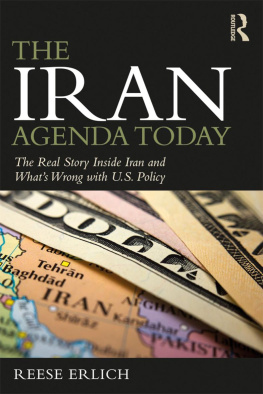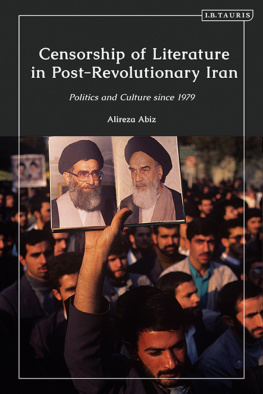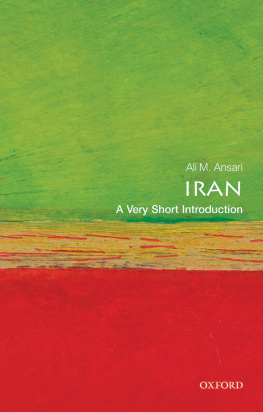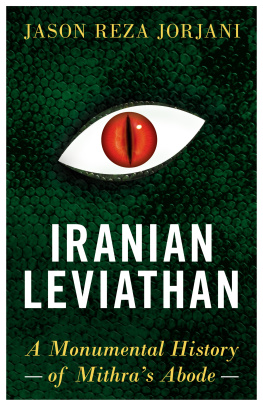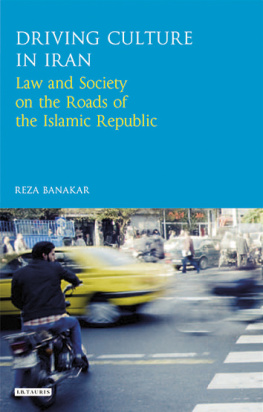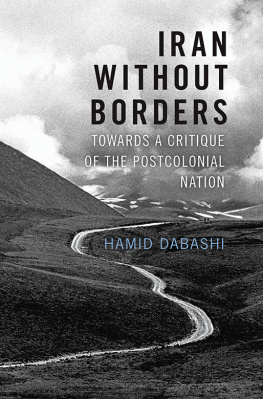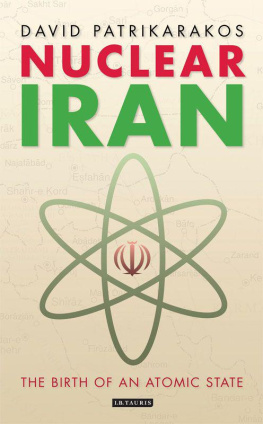
Annabelle Sreberny is Professor of Global Media and Communications and Director of the Centre for Media and Film Studies at SOAS, University of London. She is President of the International Association for Media and Communication Research. Her book Small Media, Big Revolution: Communication, Culture and the Iranian Revolution provides an analysis of the communication dynamics of the 1979 revolution, some elements of which were repeated in the 2009 process.
Gholam Khiabany is Reader in International Communications in the Department of Applied Social Sciences, London Metropolitan University. He is the author of Iranian Media: The Paradox of Modernity.
In a world where we are yet even to imagine the revolutionary potentials of the new media, Annabelle Sreberny and Gholam Khiabany's Blogistan explores the expanding power of internet technology and the politics of discontent it has made possible in one of its most exciting testing groundthe Islamic Republic of Iran. the fact that the Islamic Republic has just launched a cyber-army to combat the soft war that they believe Iranian bloggers have launched against tyranny is a testimony to the timeliness of this critical study. Annabelle Sreberny and Gholam Khiabany's judicious, informed, sympathetic, and pathbreaking intervention announces a whole new generation of scholarship in the field'
Hamid Dabashi, Columbia University
Blogistan is essential reading for anyone who wants to really comprehend how the digital age looks beyond the west in this case contemporary Iran where a media world has been created that encompasses government control and censorship, digital activism, politically savvy hacking, gendered concerns, and serious parody, to name a few of Blogistan's topics. The intensity and creativity that the authors discuss and analyze make it clear that this part of the world is a lively and essential location for readers across disciplines, from anthropology to media studies. Who knew that Persian was one of the most frequently used languages on the internet? Once you read this book by two scholars with deep knowledge of the Iranian mediascape none of this will surprise you.'
Faye Ginsburg, Director, Centre of Media, Culture and History, NYU
Of all the locations where the new media are making their mark, none has the capacity to engage like Iran does, and this remarkable study has both exhilarating and sobering things to tell us about life in a post-revolutionary state. Essential and engaging reading!'
Toby Miller, University of California Riverside

Reprinted in 2011 and first published in 2010 by I.B.Tauris & Co Ltd
6 Salem Road, London W2 4BU
175 Fifth Avenue, New York NY 10010
www.ibtauris.com
Distributed in the United States and Canada Exclusively by Palgrave Macmillan
175 Fifth Avenue, New York NY 10010
Copyright 2010 Annabelle Sreberny and Gholam Khiabany
The right of Annabelle Sreberny and Gholam Khiabany to be identified as the authors of this work has been asserted by them in accordance with the
Copyright, Designs and Patent Act 1988.
All rights reserved. Except for brief quotations in a review, this book, or any part thereof, may not be reproduced, stored in or introduced into a retrieval system, or transmitted, in any form or by any means, electronic, mechanical, photocopying, recording or otherwise, without the prior written permission of the publisher.
International Library of Iranian Studies, Vol 18
ISBN: 978 1 84511 606 4 (hb)
ISBN: 978 1 84511 607 1 (pb)
eISBN: 978 0 85773 141 8
A full CIP record for this book is available from the British Library
A full CIP record is available from the Library of Congress
Library of Congress Catalog Card Number: available
Typeset in Bembo by MPS Limited, a Macmillan Company
List of Illustrations
(All original photographs were taken by Annabelle Sreberny in November 2008 unless otherwise indicated)
List of Tables
Introduction
IN JUNE 2009, the Islamic Republic experienced a contested presidential election and a rapid and powerful popular mobilisation that used a range of digital technologies to organise and to get its message out to the world. This book provides the necessary background to understanding this unexpected and dramatic political movement. Written before the June events, it nonetheless explains the development of internet infrastructure, the shift of face-to-face politics to the internet and the possibilities and constraints on social change existing inside the Islamic Republic.
This is a book about blogging and about Iran. It is about the emergence of new' communications technologies, the practices that are invented around them and the meanings of these. It is also about a specific post-revolutionary country called Iran and the manner in which blogging' has become a shorthand for political expression, journalism by another name and social exploration in a milieu where such exploration is not particularly welcomed. The blogistan has become a space of contention between the people and the state. As the Islamic Republic of Iran tries to celebrate 31 years of the revolution, the promises and disappointments of that process are brought into focus once more. An exploration of blogging is a fascinating way of understanding the failures of that revolution, while the dynamics of the Green Movement' echo some of that earlier political process.
The phenomenon of Iranian blogging has been recognised for some time by Iranian political commentators, by international journalists and within the blogging community. Often, there is a sense of surprise: Oh, Iranians are computer literate? Sometimes there's a sense of paradox: But isn't Iran a repressive state? Others are dumbstruck by the idea that there are women bloggers. There's even an experimental video on the subject. There is just a general sense of wow!'
Much of this is of course a response mediated by the limited and skewed representations of Iran by the Western press, which was especially one-sided during the latter part of President George Bush's presidency as the potential nuclear threat' was so provocatively hyped in the media. Just try a Google search for Iran's nuclear weapons' and it produces over 6 million hits, making a sociolinguistic fact even if the material or military reality is not completely proven. However, since November 2007, and the publication of the independent report by US intelligence on the weak development of an Iranian nuclear weaponising programme, the English media in the USA and the UK started treating readers to a number of stories humanising' Iran and its people, recognising their ski resorts, appreciating their food, even claiming that they are just like us' (Schuh, 2008). Following the election of a Democrat president with a Muslim middle name, Barack Hussein Obama, the mood thawed and his warm Norouz message for the Persian new year in March 2009 was an important symbolic gesture that did not go unnoticed, although by March 2010, relations with Iran seemed to be back to the same threatening stand-off with a new sanctions regime in the offing.
One of the analytic difficulties in trying to understand the contemporary Iranian political environment is the poverty of conceptual tools available. At gatherings of Iranians, many critics often lambast the regime as totalitarian'. Without entering into a complex analysis of whether this term was of any use before, it certainly does not work for contemporary Iran. While the state might be said to have totalising impulses, arrogating itself the right to interfere and control many arenas of sociocultural life that would be designated private elsewhere, it still remains the case that contemporary Iran is remarkably porous. Groups of tourists from around the world albeit not as many as before can be found in many cities. The Iranian diaspora moves in and out with comparative ease. Satellite TV provides hundreds of channels that offer a range of content, from news and political debate to everyday entertainment, serials and soaps to a remarkable array of Arab porn channels. Nor does its political structure emulate the centralisation and organisation of China, let alone of North Korea. It is not like those states. But neither is it a Western democracy.


